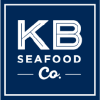Sustainable Seafood Chain of Custody
MSC CoC, ASC CoC, and RFM CoC Certification

- Latin America /
- Supply Chain Management /
- Sustainable Seafood Chain of Custody



Seafood Certification Team
What is Sustainable Seafood Chain of Custody?
For LATAM companies interested in showcasing their commitment to sustainable best practices within the seafood industry, SCS Chain of Custody (CoC) certifications provide accurate and efficient services to track sustainably sourced seafood from the point of harvest, through the supply chain to the customer. Our local and regional LATAM auditors can provide Marine Stewardship Council (MSC) certification, Aquaculture Stewardship Council (ASC) certification, or Responsible Fisheries Management (RFM) certification. By becoming certified to these globally recognized standards, your company will gain access to higher margin markets and gain competitive advantage by meeting retailer and customer demand. In addition, companies can manage their risk by assuring customers that their seafood comes from legal and environmentally responsible sources.
SCS was the first accredited MSC Chain of Custody certification body and a contributor to the development of the MSC, ASC, and RFM standards. SCS is fully versed in the nuances of the requirements and on-the-ground challenges faced by certificate holders and applicants in the LATAM region having certified hundreds of organizations. In addition, our team of Spanish and Portuguese-speaking auditors have a reputation within the LATAM region for providing thorough, timely, and cost-effective service.
Why Choose SCS?
SCS has four decades of experience certifying environmental, social, health and safety claims and is recognized globally for integrity, scientific rigor and true independence. For our LATAM customers, we provide accurate and efficient certification services for MSC, ASC, and RFM supply chains. The certification process is easy – After receiving your application, SCS will submit an audit proposal tailored to your company’s operational needs. Once agreed to, the audits include – document reviews, traceability and batch reconciliation exercises, staff interviews, and a facility walkthrough. Upon successful completion of your audit, SCS will issue your company an MSC, ASC, RFM (or any combination thereof) Chain of Custody Certificate(s).
- Benefits
- Program Details
- Process
- FAQs
- Documents
By becoming CoC certified, your business will be able to:
- Gain a competitive advantage in the marketplace by meeting retailer or customer demand for certified products
- Access to higher margin markets
- Manage risk by assuring your customers that your seafood comes from legal and environmentally responsible sources
- Promote your products with consumer-facing sustainability labeling
- Demonstrate Corporate Social Responsibility
- Help protect the marine environment and secure fish stocks for the future
Eligibility
- Any organization that takes legal ownership with the intent to sell with a certified claim, either business to business or direct to consumer.
- Any organization that takes possession of customer-supplied material to act as a contract processor or repacker.
Key Principles and Requirements
To be CoC-certified your organization must have procedures and record keeping in place where you can demonstrate to an auditor that you’ve:
- Received certified seafood product directly from a certified fishery, farm, or CoC certified supplier.
- Kept certified seafood product separate from non-certified seafood while in your ownership (through storage, processing, packaging and sale/shipping). Basically, ensure that you’ve identified all risks of comingling certified with non-certified product, put controls in place to address those risks, and have records that demonstrate those controls are effective.
- Have records that allow a link from sales of certified product back to your supplier receiving document.
-
Submit application
Submit an application. SCS prepares a proposal that includes the scope and cost of the audit. Sign and return the proposal to begin the project.
-
Pre-Audit
Become familiar with the requirements then review your operations, developing additional procedures, training and record keeping as needed to ensure you can demonstrate to an auditor that you have:
- Received certified seafood product directly from a certified fishery, farm, or CoC certified supplier.
- Identified all risks of comingling certified with non-certified product, put controls in place to address those risks, and have records that demonstrate those controls are effective.
- Have records that allow a link from sales of certified product back to your receiving document (i.e. invoice) from supplier.
-
On-site Audit
An SCS auditor visits your facilities to review your organization's control systems and records from a sample of transactions to verify traceability. The auditor then prepares an audit report.
-
Corrective Actions
Based on findings in the audit report, SCS issues corrective action requests as applicable. Your organization must respond to any non-conformities raised.
-
Certification Decision
SCS reviews the audit report as well as evidence of implementation of corrective actions before rendering a final certification decision. Successful applicants are issued a CoC certificate and can sell certified product and promote their certification. SCS can also provide client marketing support.
-
Surveillance Audits
CoC certification is granted for three years and requires surveillance audits at 12 or 18 month intervals relative to the risk of your operations.
| Document Name | Document |
|---|---|
| Brochure: View the benefits of chain-of-custody certification | English |
| Brochure: Your One-Stop Shop for Sustainable Seafood Solutions | English | Spanish |
| MSC Chain of Custody | Visit Site |
| MSC Chain of Custody Program – Supplementary Requirements for the ASC-MSC Seaweed (Algae) Program | English |
| MSC Chain of Custody Standards | Visit Site |
| MSC CoC Consumer Facing Org. v2.0 | English |
| MSC CoC Default v5.0 | English |
| MSC CoC Group v2.0 | English |
| RFM Chain of Custody Standards | Visit Site |
Seafood Certification Team
Featured Clients



To see a list of clients who are certified by SCS Global Services, click here
